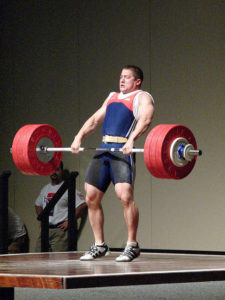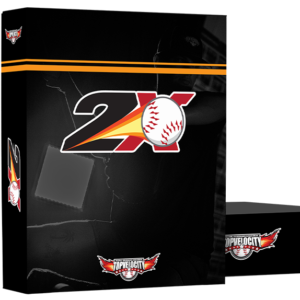 So you are heading to a tryout and you need help Improving 60 Yard Dash? How about I cut through the BS and give you a groundbreaking case study that holds all of the secrets to developing a 6.6 60 or better?
So you are heading to a tryout and you need help Improving 60 Yard Dash? How about I cut through the BS and give you a groundbreaking case study that holds all of the secrets to developing a 6.6 60 or better?
What makes the 60 so attractive to scouts? I have no idea because it is not that specific to the distances, angles, and situations of running the base path in a baseball game but this doesn't matter, as long as they continue to use the 60 you need to learn to run it successfully. You will also find that most of the top players in the MLB can run it successfully as well, so there must be some correlation between 60 speeds and Major League Ball Players.
In this article, I will go over this groundbreaking case study and its links to top sport speeds and how to effectively use these secrets in a 60 sprint training program to help you develop an elite 60 yard sprint time. I would also highly recommend that you sign up for the FREE 3 Part Series on 30 Days to a Top Prospect Player Profile because the second video gives you 60 sprint technique tips to help you improve your sprint times.
Study: Strength and Power Predictors of Improving 60 Yard Dash
A study out of New Zealand has discovered a direct correlation of certain lifts and exercises to sprint performance in sports. The interesting part of the study is the poor correlation of strength lifts or isokinetic strength to sprint performance. Here are the results from the study:
The correlations between the 3RM, drop jump, isokinetic strength measures, and the 3 measures of sport speed were nonsignificant. Correlations between the jump squat (height and relative power output) and countermovement jump height and the 3 speed measures were significant. The squat and countermovement jump heights as well as squat jump relative power output were the only variables found to be significantly greater in the fast players. It was suggested that improving the power to weight ratio as well as plyometric training involving countermovement and loaded jump-squat training may be more effective for enhancing sport speed in elite players (1).
This study has opened up some secrets to sport speed and baseball performance and that is the direct correlation of jump height and power output to the faster players. This case can also be made with the performance data of Rookie to Major League Baseball as listed here in the article called, Holy Grail Study Proves MLB Players Produce More Vertical Power. The study from this article also shows on average the faster runner and the player with the more power output plays at the higher level of the game.
This jump height or power output is best represented in a player power-to-weight ratio. This means how much power can the athlete generate above his own body weight. This is the most effective way to determine the better baseball player and we are learning in this case, the faster sprinter.
Strength in Sprinting
 There are some sprint coaches in this game who believe strength is the key to sprint performance. They wouldn't be totally wrong because some studies have linked the concentric force of the hamstring muscle to sprint performance as listed here:
There are some sprint coaches in this game who believe strength is the key to sprint performance. They wouldn't be totally wrong because some studies have linked the concentric force of the hamstring muscle to sprint performance as listed here:
The best predictor of the 40-yard-dash times for 39 male college athletes was the peak concentric hamstring force measured at 60*-s (3). Guskiewicz et al. (4) found correlations of a similar magnitude when studying the predictors of sprint performance in 41 collegiate baseball and football players.
But many studies would also say that these sprint coaches are not totally right. Here are several case studies showing strength having no significant link to sprint performance.
Baker and Nance (5) found no significant relationships between a 3RM squat and 10-m and 40-m sprint performance of professional rugby-league players. Costill et al. (6), who studied the relationship of various strength power measures to 40-yard dash performance using college football players and squat strength was among the lowest correlations reported in this study. Wilson et al. (7) reported a nonsignificant relationship between squat (1RM) and 40-m sprint performance.
The problem here is that it is more than just pure strength or pure power, it is strength and power based on the athlete's own body mass. Here is an excerpt from one of the previous studies making this distinction:
Baker and Nance (5) found that none of their absolute strength and power measures were correlated significantly to 10-m and 40-m sprint performances for professional rugby-league players. However, when the measures were expressed relative to body mass, the squat, power clean, and jump-squat measures were found to correlate to sprint performance.
This is why the jumping movements or the jumping lifts are the most effective when it comes to enhancing the power-to-weight ratio which drives the vertical jump and sprint performance.
Olympic Lifting in Sprinting
 The original study now has given us the first secret in improving our 60 yard dash. They have concluded that based on the science the Olympic Style lifting is the most effective training to enhance sprint performance and they give the reason why here:
The original study now has given us the first secret in improving our 60 yard dash. They have concluded that based on the science the Olympic Style lifting is the most effective training to enhance sprint performance and they give the reason why here:
In terms of movement pattern specificity, assessment that is ballistic in nature and allows projection of oneself or a bar (e.g., drop jumps, jump squats, etc.) have acceleration/ deceleration profiles that more closely simulate the movement profiles of athletic activity (8). This would explain the stronger relationships between power assessment of this type and sprint performance.
Also in the case study by Costill et al. (6) they found the vertical jump to have the highest correlations with 40-yard sprint performance. We have several studies like the one here that show the highest correlation with Olympic Lifting to vertical jump improvement:
Findings from the current study indicate that Olympic lifts as well as power lifts provide improvement in vertical jump performance and that Olympic lifts may provide a modest advantage over power lifts for vertical jump improvement in high school athletes (2).
This means the best way to improve your power-to-weight ratio, and increase your vertical jump and sprint performance is with an Olympic Style strength and conditioning program. This is the foundation of the 2X Velocity Program which is the throwing velocity and sprint speed enhancement program that was developed here at TopVelocity.net
Improving 60 Yard Dash Technique
The original study also found that the most important segment of the 30m dash is the first two phases as explained here:
The strongest relationship was between the measures of first-step quickness and acceleration. The relationship between first-step quickness and maximal speed is weaker. That is, first-step quickness (5-m time) accounts for less than 53% of the explained variance associated with maximal speed (30-m time) (1).
The study also found that the athletes who were faster at 5m were also the fastest over 30m. This shows how important these early phases are to your sprint performance:
When the players were divided into slowest and fastest sprinters (based on 5-m rankings), no significant between-group differences was found for any of the 3 distances. This indicates that those players who were fast over 5 m were also the fastest over 30 m, signifying the need for a good start and rapid acceleration for better sprint performance (1).
Even though this data isn't exactly specific to the 60 yard distance it does mention that anything from 30m to under 100m is more similar than anything over 100m.
Improving 60 Yard Dash with 2X Velocity Program
 Unfortunately, it isn't enough to learn the secrets to the 60 yard dash in a scientific study and then go out to a showcase and run a 6.6. It takes a program built around this level of information. This is what I did to develop the most effective program you can find to improve not only your 60 yard sprint but to also improve the other parameters to develop a Top Prospect Player Profile.
Unfortunately, it isn't enough to learn the secrets to the 60 yard dash in a scientific study and then go out to a showcase and run a 6.6. It takes a program built around this level of information. This is what I did to develop the most effective program you can find to improve not only your 60 yard sprint but to also improve the other parameters to develop a Top Prospect Player Profile.
In the 2X Velocity Program, it will give you the technique to run the 60 yard sprint as fast as possible at the same time training you 5 days a week using a full calendar of drills, lifts, and exercises in a cyclical, periodized performance-enhancing Olympic-style program. It is the real deal and if you are going to take these secrets to improve the 60 yard dash and implement them into your sprint performance you will need a program like the 2X Velocity program.
For more training content, remote coaching, and weekly video analysis check out the TopVelocity Patreon!
Reference:
- Cronin JB, Hansen KT. - Strength and power predictors of sports speed. - New Zealand Institute of Sport and Recreation Research, Auckland University of Technology, Private Bag 92006, Auckland, New Zealand. - J Strength Cond Res. 2005 May;19(2):349-57.
- Channell BT, Barfield JP. - Effect of Olympic and traditional resistance training on vertical jump improvement in high school boys. - Oliver Springs High School, Oliver Springs, Tennessee, USA. - J Strength Cond Res. 2008 Sep;22(5):1522-7.
- ANDERSON, M.A., J.H. GIECK, D. PERRIN, A. WELTMAN, R. RUTT, AND C. DENEGAR. - The relationship among isometric, iso- tonic and isokinetic concentric and eccentric quadriceps and hamstring force and three components of athletic performance. - J. Orthop. Sports Phys. Ther. 14:114–120. 1991.
- GUSKIEWICZ, K., S. LEPHART, AND R. BURKHOLDER. - The relationship between sprint speed and hip flexion/extension strength in collegiate athletes. - Isok. Exerc. Sci. 3:111–116. 1993.
- BAKER, D., AND S. NANCE. - The relation between running speed and measures of strength and power in professional rugby league players. - J. Strength Cond. Res. 13:230–235. 1999.
- COSTILL, D.L., S.J. MILLER, W.C. MYERS, F.M. KEHOE, AND W.M. HOFFMAN. - Relationship among selected tests of explosive leg strength and power. - Res. Quart. Amer. Ass. Health Physical Ed. Rec. 39:785–787. 1968.
- WILSON, G.J., A.J. MURPHY, AND A. WALSHE. - The specificity of strength training: The effect of posture. - J. Appl. Physiol. 73: 346–352. 1996.
- NEWTON, R., AND W. KRAEMER. - Developing explosive muscular power: Implications for a mixed methods training strategy. - Strength Cond. 6:36–41. 1994.
- YOUNG, W.B., R. JAMES, AND I. MONTGOMERY. - Is muscle power related to running speed with changes of direction? - J. Sports Med. Phys. Fit. 42:282–288. 2002.




